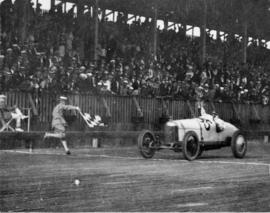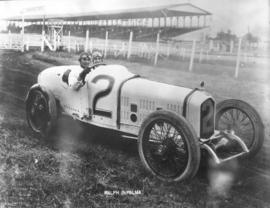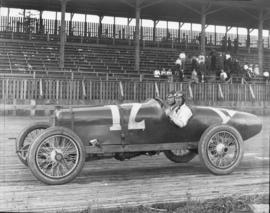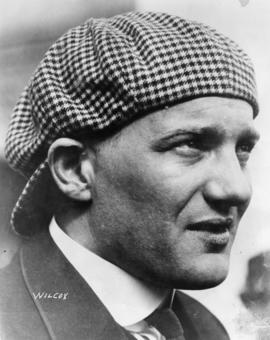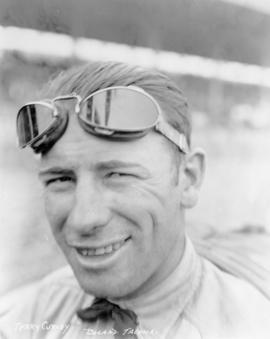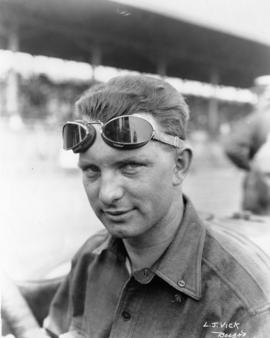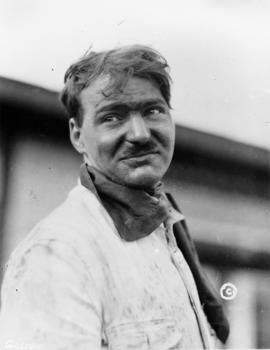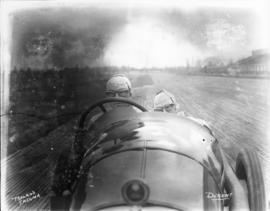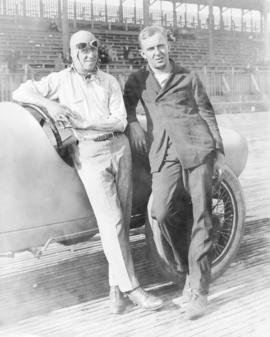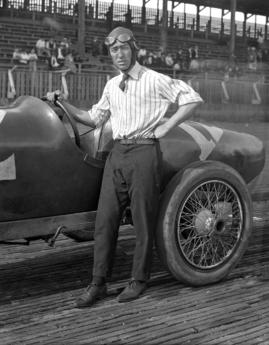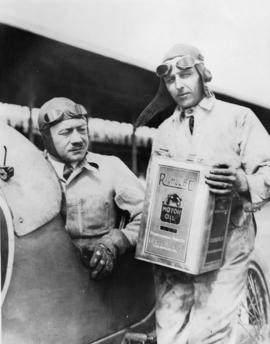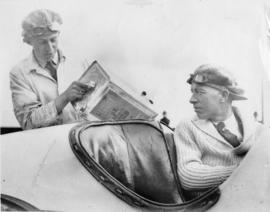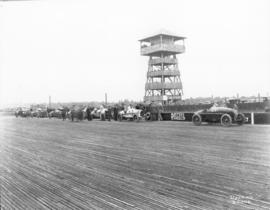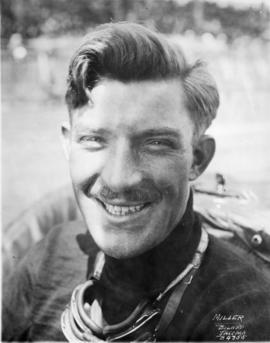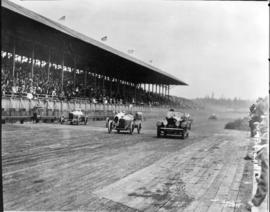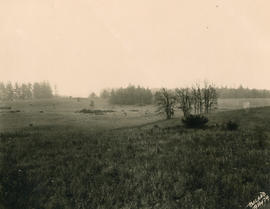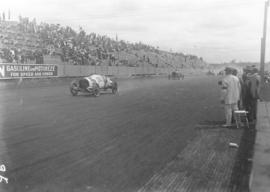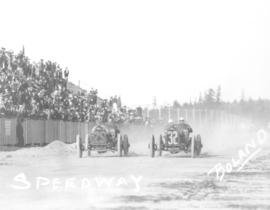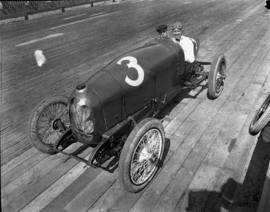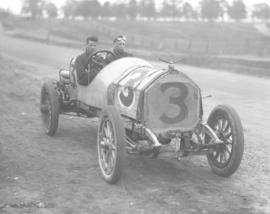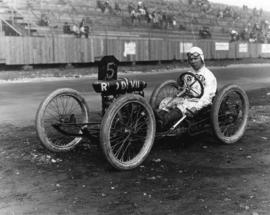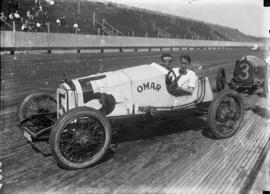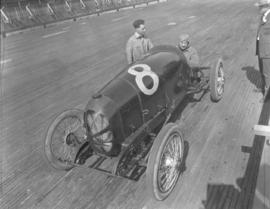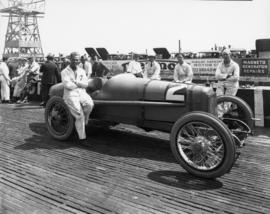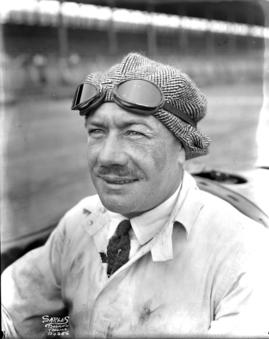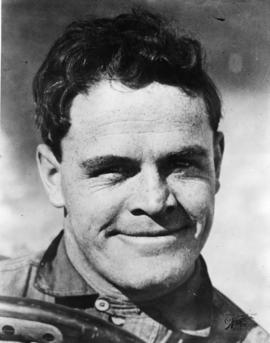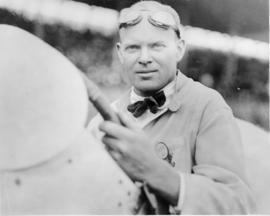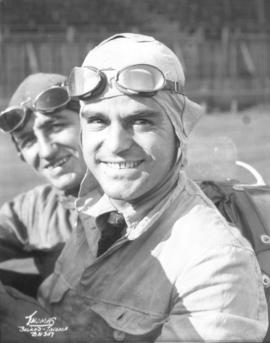- Item
- 1922-07-04
Part of Marvin Boland Photographs
Jimmy Murphy raised his right arm in triumph as he passed the checkered flag waved by Fred Wagner, winning the July 4th 1922 Tacoma Speedway Classic and setting a new track record. Murphy finished the 250 mile race in 2:33:55, narrowly defeating Tommy Milton. Murphy's average speed was 97.6 mph. He was driving his own "Murphy Special." He was favored to win the Tacoma Classic, having won the 1922 Indy 500 on Memorial Day. He was also the first American to win the French Grand Prix, in 1921. His numerous wins entitled him to wear the crown of National Racing Champion in both 1922 and 1924. However, his racing career only spanned a short four years and nine months. He was killed in a crash at Syracuse, New York, in September of 1924. (TDL 7/5/1922, pg. 1) TPL-8797, Speedway-142
Racing automobiles--1920-1930; Tacoma Speedway (Lakewood); Racetracks--Lakewood--1920-1930; Automobile racing--Lakewood--1920-1930; Murphy, Jimmy;
